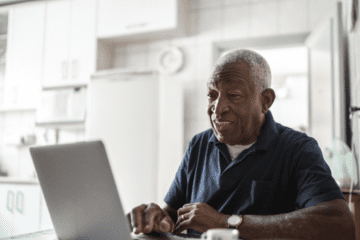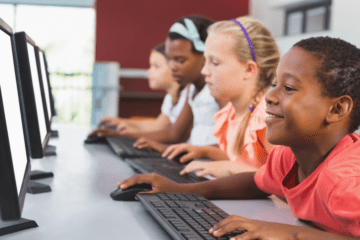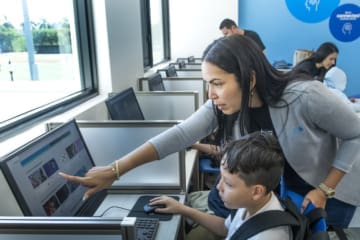Connecting changes everything. We’ve been working for 147 years to bring that statement to life. And in our now digital world, it’s a universal truth. We’ve seen the power of connectivity in action – from helping keep seniors from isolation to getting students prepared for the future. For Deaf, Deafblind, Deafdisabled, Hard of Hearing, and Late-Deafened (hereafter referred to as “deaf and hard of hearing”) individuals, the connection created through accessible, affordable broadband is life changing. From enabling the ability to telecommute, build a business from the home or conduct phone interviews, connectivity provides equal opportunity and participation for the deaf and hard of hearing community.
To learn more about how important connectivity is to the deaf and hard of hearing community, we spoke with Howard Rosenblum, CEO of the National Association for the Deaf.
Q: Thinking back even 10 years ago, how has accessible, affordable broadband helped better connect deaf and hard of hearing individuals?
Rosenblum: Broadband has made it possible to use specialized devices and services that benefit deaf and hard of hearing people such as videophones and video relay services, captioned telephones, and Internet Protocol Relay Services. All of this was made possible in the last fifteen years.
In addition, real-time text (RTT) has become an additional means for people from our community to connect instantly with everyone via their smartphones. Such services have made communication more equitable for these individuals, and they are only possible through accessible, affordable broadband.
Q: Can you talk about some of the features and tools of internet connectivity that help the community get on an equal playing field?
Rosenblum: In addition to the technology mentioned above, the advent of streaming video services combined with captioning access in the last ten years has made it possible for deaf and hard of hearing individuals to enjoy media entertainment in a more accessible way.
There are also many apps and programs that improve access to all kinds of services and information that were previously not accessible to them.
Q: Many minority, disability and underserved communities face isolation and other mental health issues. What role does connectivity play in helping individuals feel part of a community?
Rosenblum: Connectivity ensures deaf and hard of hearing individuals (especially those who come from BIPOC (Black, Indigenous, People of Color) communities can communicate and form relationships with their hearing family members, as well as communicate with doctors, therapists, bankers, and other professionals to get the services they need to live healthy, happy, and productive lives.
Connectivity means greater access to health care, remote jobs, educational opportunities and more. Without connectivity, these underserved people face communication barriers and can end up being isolated from the rest of the world.
Q: Advanced connectivity like 5G is opening a new world of possibility by enabling technologies like the Internet of Things (IoT) and artificial intelligence (AI). Do these technologies benefit the DHH community? What’s the tool or resource you’re most excited about?
Rosenblum: There is much to be excited about the advent of 5G, IoT and AI. All these new technologies make it possible to lead lives with less barriers than ever before.
For example, faster, more reliable broadband makes it possible for deaf and hard of hearing people to live more independently. By enabling advanced technology like smart home solutions, these individuals can access all that goes on in their home from lighting to television to home security.
At the same time, new technologies can create barriers as well as break them down, so it’s always important to properly design these new technologies in the most accessible and universal way possible by including people with disabilities at the start of any such design and development.





